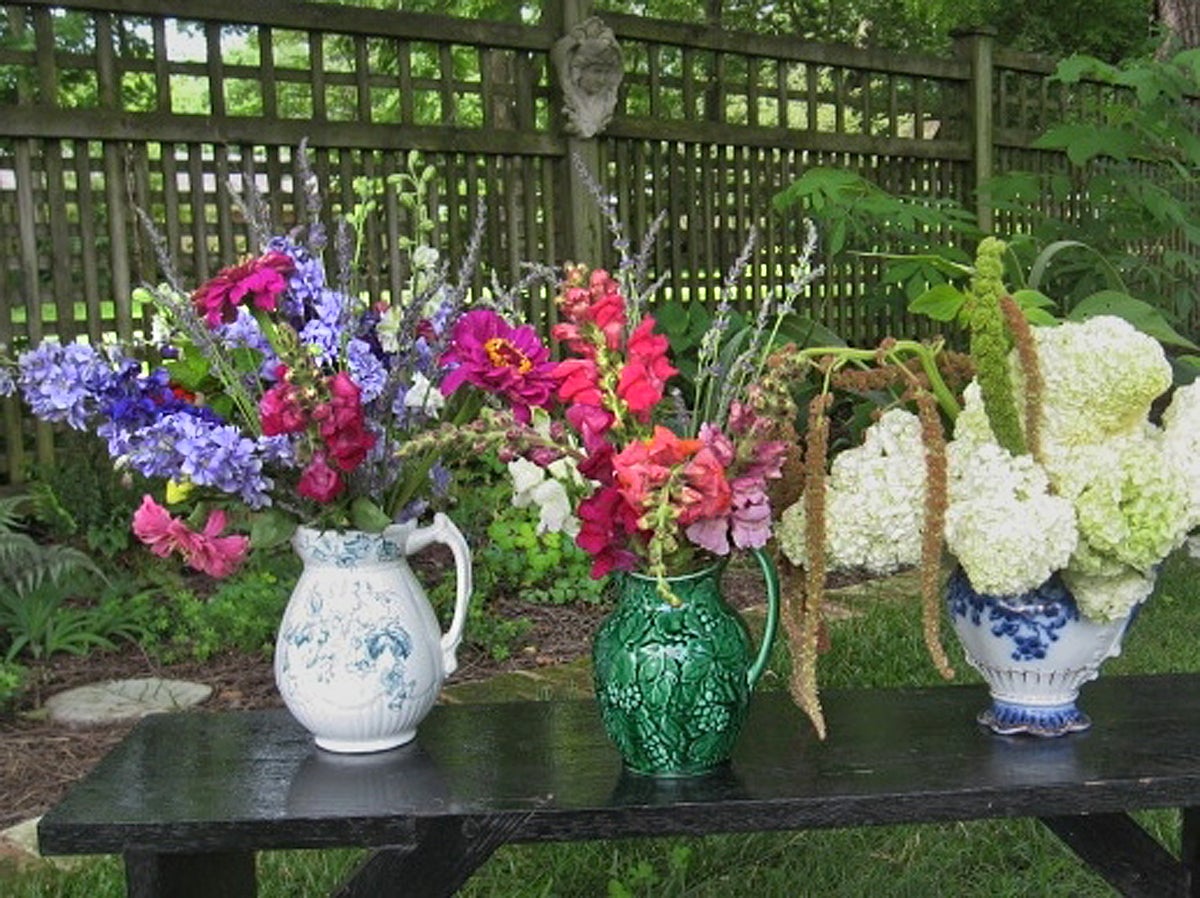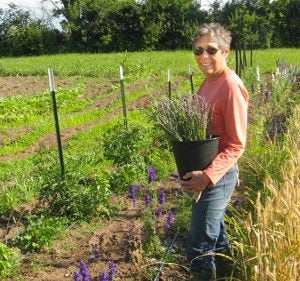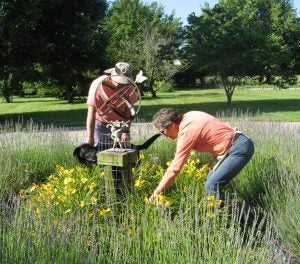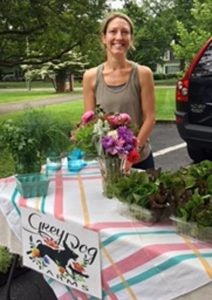Slow Flowers
Published 9:05 am Monday, June 26, 2017

- Why buy imported flowers when you can find beauties like these for comparable prices at our Farmers Market on Saturdays? Vibrant, unusual blossoms are available from Margo Goodwin of Fleur and Brianna Feistritzer of Grey Dog Farms, among other vendors. For longest life, be sure there are no leaves below the water line in your vase.
Story and photos by SUSAN JONAS
Garden Club of Danville
There’s a local flower movement blooming. Many of us are familiar with the Slow Food movement, which means eating food grown locally and sustainably. If you buy locally grown food, you know where your fruits and vegetables came from, how your eggs were raised, and whether your beef was grass fed or your poultry cage free. But what about the bouquet of flowers you bought at the supermarket? Maybe it’s time to think about flowers the same way you think about food.
Americans typically spend $7-8 billion a year on cut flowers. Yes, I said billion. Chances are those flowers have racked up more miles than a campaigning politician. Nearly 80 percent of the flowers sold in the United States are imported, most from South America. They arrive by air, usually in Miami, and are trucked across the country for retail. That’s a whopping carbon footprint, not to mention the possibility of chemical preservatives and questionable labor practices.
A website, www.slowflowers.com, connects customers with commercial florists selling American grown flowers. This time of year a better alternative is our own Farmers Market on Saturday mornings in front of Danville High School. Not only can you find fruit and vegetables picked yesterday, or even early that morning, several enterprising gardeners offer buckets and bouquets of beautiful flowers grown right down the road. These are real garden flowers, not those stiff, artificial looking carnations and roses in cellophane wrappers. Like watermelon and tomatoes, flowers are best in season.
Regulars at the market appreciate the cheerful greeting and kaleidoscope of blooms from Margo Goodwin of Fleur. Margo and her husband Russ tend a half acre garden next to their house on the outskirts of Danville. Her flowers are cut by the armloads on Friday and spend the night up to their necks in buckets of water in a chilly room. This allows them to soak up maximum moisture for longer vase life.
Margo starts seeds in late winter indoors or in a hoop house. She will be planting seeds until July, to insure blooms through October. If you can’t wait until Saturday for your flowers, just email margoandruss@gmail.com and she’ll see that you get some earlier in the week.
You’ll usually find Brianna Feistritzer at the market, too, with her own selection of flowers, herbs, and vegetables from Grey Dog Farms.
The Garden Club’s Kathy Miles, her husband Preston, and son Ben come to the market from their Walnut Springs Farm near Perryville to sell vegetables and organically raised chicken. Later in the summer they will occasionally have fresh flowers from Kathy’s garden. In mid-summer, other market vendors have flowers to sell, first come, best selection.
Many local flowers are not available at your typical florist, like Brianna’s ornamental millet. This summer at Margo Goodwin’s booth, look for Belles of Ireland, lisianthus, gomphrena, and a heavenly blue Chinese forget-me-not. They are more vibrant, more fragrant, and they last longer than imported flowers because they haven’t traveled far. Local growers offer more colors and varieties than most of us have the space or the time to cultivate. The flowers look fresher and healthier and often include old fashioned varieties like larkspur that can’t be found anywhere but a home garden. Even customers who don’t care about carbon emissions can appreciate that.
Hats off to those of you who grow your own flowers. You can’t get any more local than the back yard. If you don’t have a cutting garden, the farmers market should be a regular destination. If you care about the small family farms that are so much a part of our beautiful Bluegrass landscape, help them survive by purchasing their products.
The Garden Club’s Linda Porter reports that June 19-25 is National Pollinator Week, time to celebrate the insects, birds, and fruit bats which ensure that flowers bloom and crops produce food. At least 75 percent of all flowering plants depend on pollinators for successful seed production. Linda adds that Kentucky pollinators have evolved along with our native plants, which are best adapted to local growing conditions, season, climate, and soils.
For a list of 25 favorite native plants and their characteristics, click on the Resources tab of the Garden Club’s beautiful new website at www.thegardenclubofdanville.org.

Holding a bucket of freshly cut lavender, Margo Goodwin prepares to cut flowers for the Saturday Farmers Market. In a few weeks her garden will be a riot of colorful blooms.

Margo and Russ Goodwin, with Charlie, their chief mole catcher, tend a bed of lavender and daylilies growing on their small farm, along with a half acre of flowers, chickens, vegetables, bees, and butterflies.

Brianna Feistritzer of Grey Dog Farms is a familiar face at the Farmers Market, selling flowers, vegetables, and herbs. When shoppers buy local food and flowers, they help support Kentucky’s small family farms.





